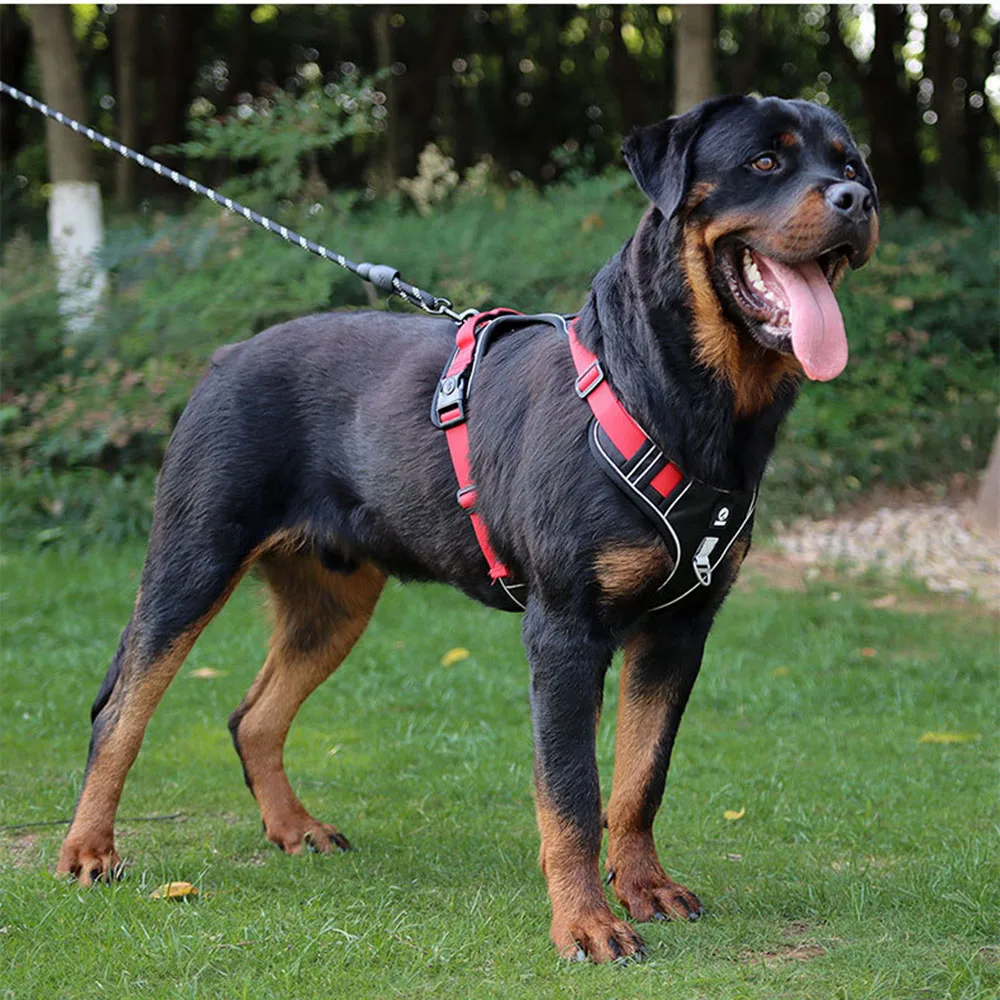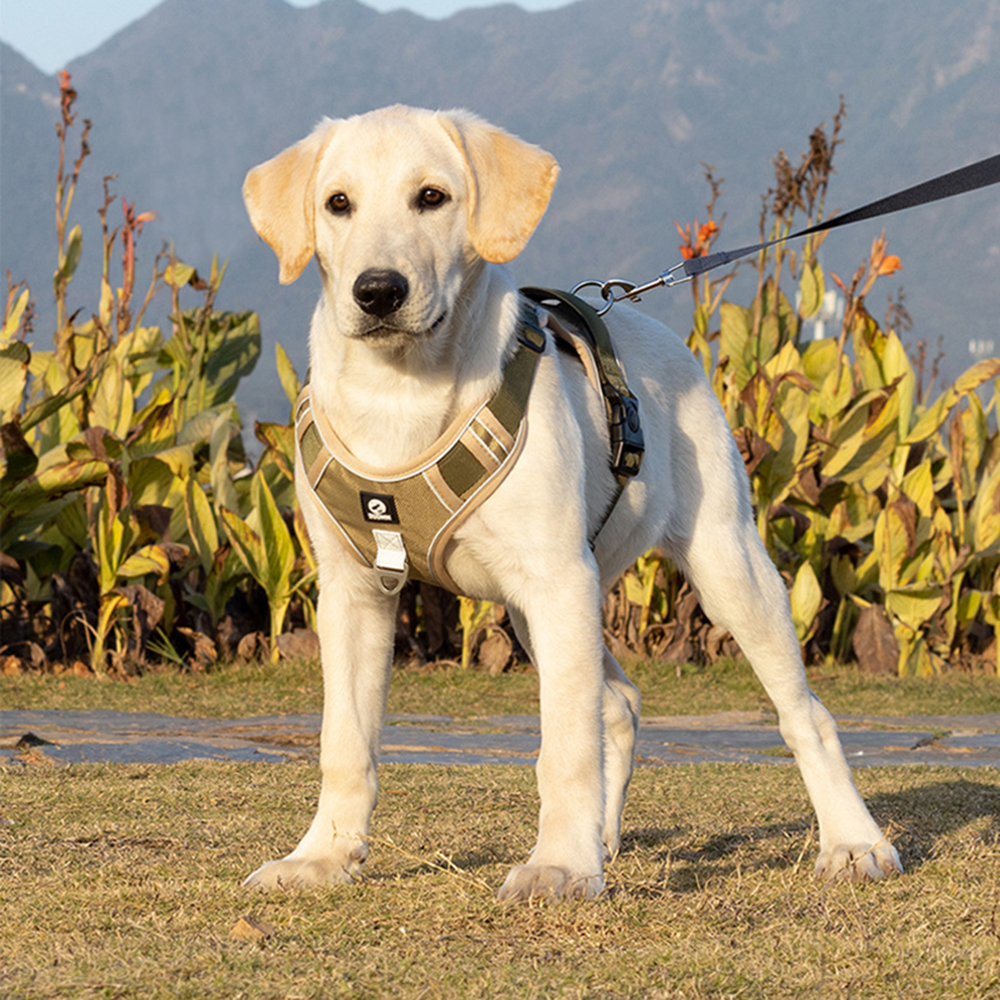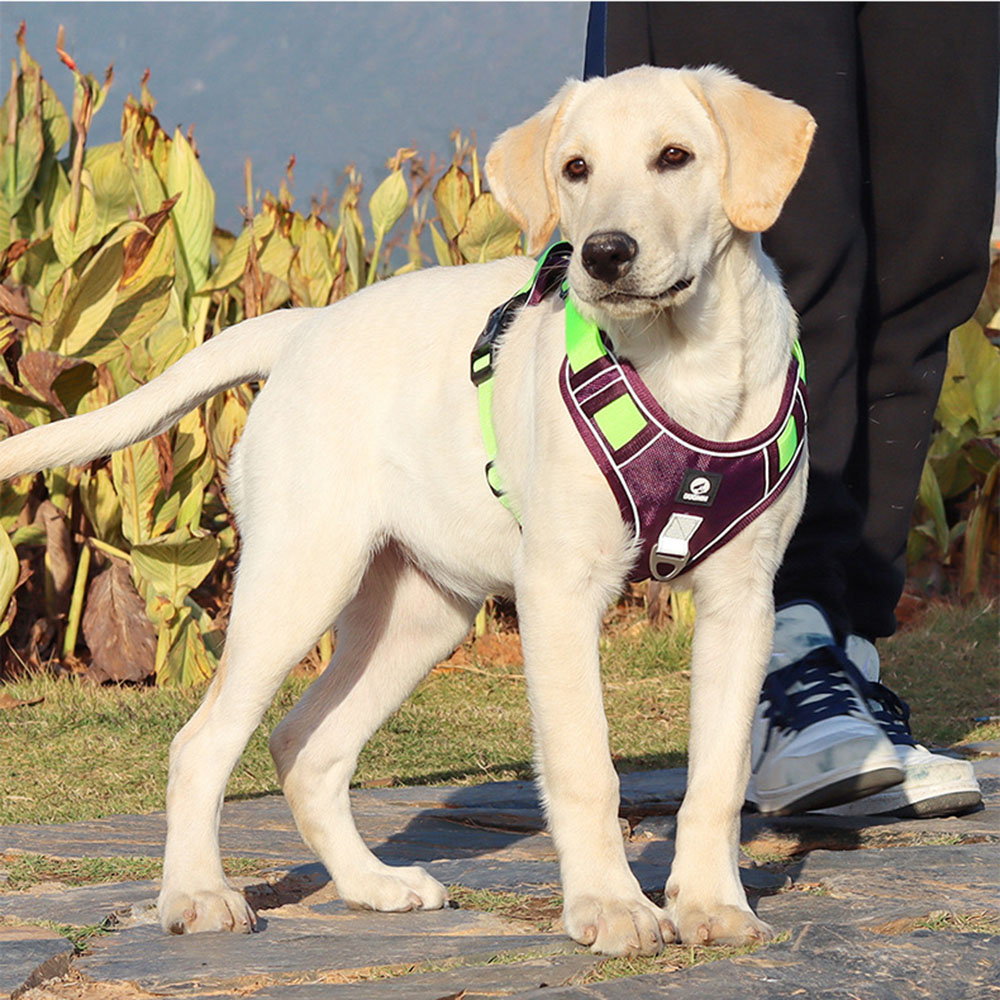Importance of Proper Harness Fit
Ensuring your dog has a harness that fits properly is crucial. A well-fitted adjustable dog harness offers numerous benefits. It enhances your dog’s comfort, prevents injuries and escapes, and makes walks more enjoyable. Harnesses that fit poorly can cause chafing, discomfort, and may allow your pet to slip out. This could put them at risk of getting lost or injured.

Always aim for a snug fit, allowing two fingers to slip between the harness and your dog’s skin. This balance provides enough space to prevent discomfort without being too loose. Your dog’s safety and well-being are paramount, and a correct harness fit supports that.
An adjustable dog harness lets you tweak the fit as needed. This is ideal for growing puppies, dogs that change weight, or for layering over different thicknesses of dog clothing. The ability to adjust the harness ensures a perfect fit throughout all stages of your dog’s life. Keep the fit in mind when choosing an adjustable dog harness, as it’s the foundation of safety and comfort for your furry friend.
Types of Adjustable Dog Harnesses
When selecting an adjustable dog harness, knowing the different types available can help you choose the best fit for your pet. Each variety offers distinct features and benefits to accommodate various breeds, sizes, and behaviors. Below are the most common types of adjustable dog harnesses you’ll find on the market.
Step-in Harnesses
Step-in harnesses are ideal for dogs who dislike having objects go over their head. To use this harness, lay it on the ground, have your dog step into the leg holes, and then pull the harness up and clip it together on the back. It’s known for being quick and easy to put on, especially for well-behaved dogs. Most step-in harnesses are adjustable around the chest area, ensuring a snug fit. Remember to adjust the harness to allow for the two-finger rule between the harness and your dog’s skin.
Over-the-Head Harnesses
Over-the-head harnesses are slipped over your dog’s head and usually fasten around the back. They often have more points of adjustment, which can help to achieve a more tailored fit. These harnesses are popular because they offer great control and can also distribute pressure more evenly across your dog’s body. As with any harness, ensure it is snug but not too tight, with the two-finger space to maintain your pet’s comfort.
Choosing whether a step-in or over-the-head adjustable dog harness is right for your dog depends on their comfort and behavior. Both should offer easy adjustability, comfort, and security for any dog. Always measure your dog before purchasing a harness to ensure the right fit. A properly adjusted harness will promote safety, control, and comfort for both you and your pet during walks.
How to Measure Your Dog for a Harness
Measuring your dog for an adjustable dog harness is a critical step. The right measurement ensures a comfortable and safe fit. Here’s how to do it:
- Neck Measurement: Measure around the base of your dog’s neck. Use a soft tape measure. Make sure it is snug but not tight. Write down the measurement.
- Chest Measurement: Find the widest part of your dog’s chest, just behind the front legs. Circle the tape measure around this part. Again, it should be snug, allowing for the two-finger rule.
- Length Measurement: Some harnesses require a length measurement. Measure from the base of the neck to the beginning of the tail.
When measuring, always use a soft, flexible tape measure for accuracy. Record each measurement. This will help when selecting the correct size for your adjustable dog harness. If your dog is between sizes, choose the larger option. You can adjust it down for a perfect fit.
Keep these measurements handy when shopping. Check them against the size guide provided by the harness manufacturer. The right size adjustable dog harness will keep your pet secure and comfortable on walks.
Key Features to Look for in Adjustable Dog Harnesses
When shopping for an adjustable dog harness, several key features ensure your dog’s comfort and safety. Aim to find a harness that not only fits well but is also made to last. Here are essential features to consider:
Material and Durability
The harness material should be strong yet comfortable. Look for breathable fabrics like nylon or neoprene. These materials can withstand wear and tear without irritating your dog’s skin. Ensure the harness has reinforced stitching for extra strength. A durable harness will provide long-lasting use and save you money in the long run.
Locking Mechanisms and Safety
A reliable harness has secure locking mechanisms. These ensure the harness does not come loose during walks. Buckles should be easy to fasten but stay firmly in place. Look for harnesses with double D-rings for leash attachment. They add an extra layer of security for your dog.
Reflective Elements for Visibility
Walks at dawn or dusk can be risky without proper visibility. A harness with reflective strips can make your dog more visible to drivers. It increases safety during low-light conditions. Choose a harness with bright colors or reflective patches for better visibility.
Adjusting Your Dog’s Harness for a Perfect Fit
Adjusting your dog’s adjustable dog harness ensures a perfect fit. Follow these steps for a snug, safe harness experience.
- Fasten the Buckles: Start with opening all the buckles on the harness.
- Position the Harness: Place the harness on your dog following the style type – step-in or over-the-head.
- Adjust the Straps: Tighten or loosen the straps. Do this until you can fit just two fingers between the harness and your dog’s body.
- Check the Chest Area: Ensure the chest part of the harness is horizontal to the floor and not sagging.
- Re-adjust if Necessary: After a short walk, check the harness again. Make sure it hasn’t become loose or tighter.
- Observe Your Dog’s Behavior: Look for signs of discomfort or restriction in movement. If your dog behaves strangely, re-check the fit.
Remember, a perfectly adjusted harness should not choke or rub. It should allow free movement while keeping your dog secure. Regular adjustments help you keep pace with any changes in your dog’s size or weight. Also, re-adjust when switching to different thicknesses of dog clothing underneath.

Troubleshooting Common Fit Issues
Even with careful measuring and adjustment, sometimes issues with your dog’s adjustable dog harness may arise. Being proactive and knowing how to address common fit problems can ensure your pet remains comfortable and safe during walks. Here are several troubleshooting tips to help you manage any fit issues that may occur.
The Harness is Too Tight
If the harness seems too snug, it could restrict your dog’s movement and make breathing difficult. If you can’t fit two fingers between the harness and your dog’s skin, it’s too tight. Loosen the straps gradually until the fit allows for that small space without compromising security.
The Harness is Too Loose
A loose harness increases the risk of your dog slipping out. Watch for excess movement or gaps in the fit when your dog walks. Tighten each adjustable point bit by bit while maintaining the two-finger rule. This ensures a snug, escape-proof fit.
Rubbing and Chafing
Signs of discomfort like redness or hair loss where the harness sits indicate chafing. This often means the harness is not sitting correctly. Check for unevenly adjusted straps or a harness that doesn’t match your dog’s body shape. You might need to try a different style or size.
Twisting Harness
A harness that keeps twisting can lead to an improper fit or discomfort. If this happens, ensure all straps are adjusted to the same tension. It helps to take the harness off, lay it flat, and compare both sides before putting it back on your dog.
Regular checks and adjustments of your adjustable dog harness are key to a comfortable and secure fit. If persistent problems occur, it may be best to consult with a pet professional or consider a different harness style or brand. Remember, your dog’s comfort and safety are always the priority.
Caring for Your Adjustable Dog Harness
Taking good care of your adjustable dog harness is key to its longevity and performance. Regular maintenance ensures it stays in great shape and is safe for your dog to wear. Below are some caring tips that will help keep your harness in top condition.
Clean Regularly: Dirt and oils can build up on the harness. Clean it with mild soap and warm water. Rinse it well to remove soap residue.
Check for Wear and Tear: Inspect the harness often for any signs of damage. Look at the buckles, straps, and stitching.
Dry Properly: After washing, let the harness air-dry completely. Avoid placing it in direct sunlight or near a heat source.
Store Carefully: When not in use, hang the harness in a cool, dry place. This prevents mold and keeps the harness from getting tangled.
Follow Manufacturer’s Instructions: Each harness may have specific care guidelines. Always follow the care instructions provided by the manufacturer.
By following these simple tips, you ensure that your adjustable dog harness remains clean, safe, and comfortable for your dog. Regular care not only prolongs the life of the harness but also keeps your walks enjoyable and secure. Remember, a well-maintained harness is a functional and reliable tool in your dog’s accessory collection.

